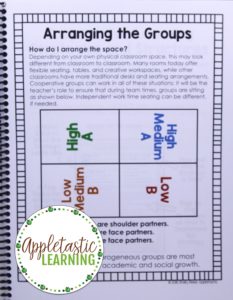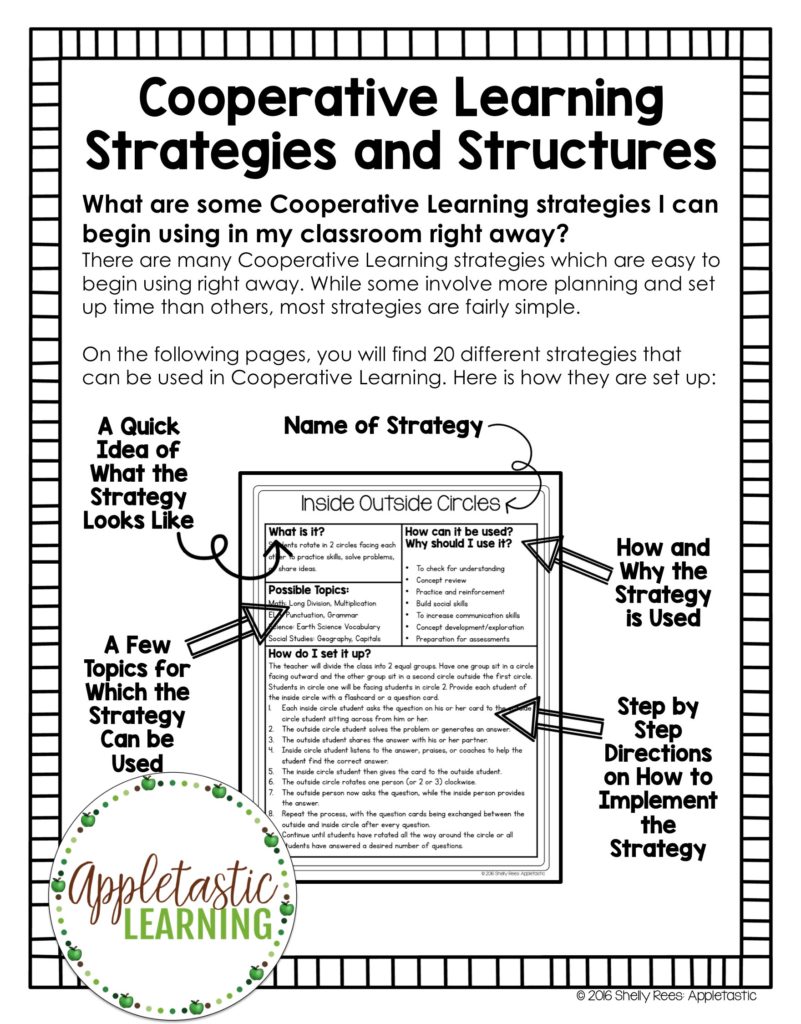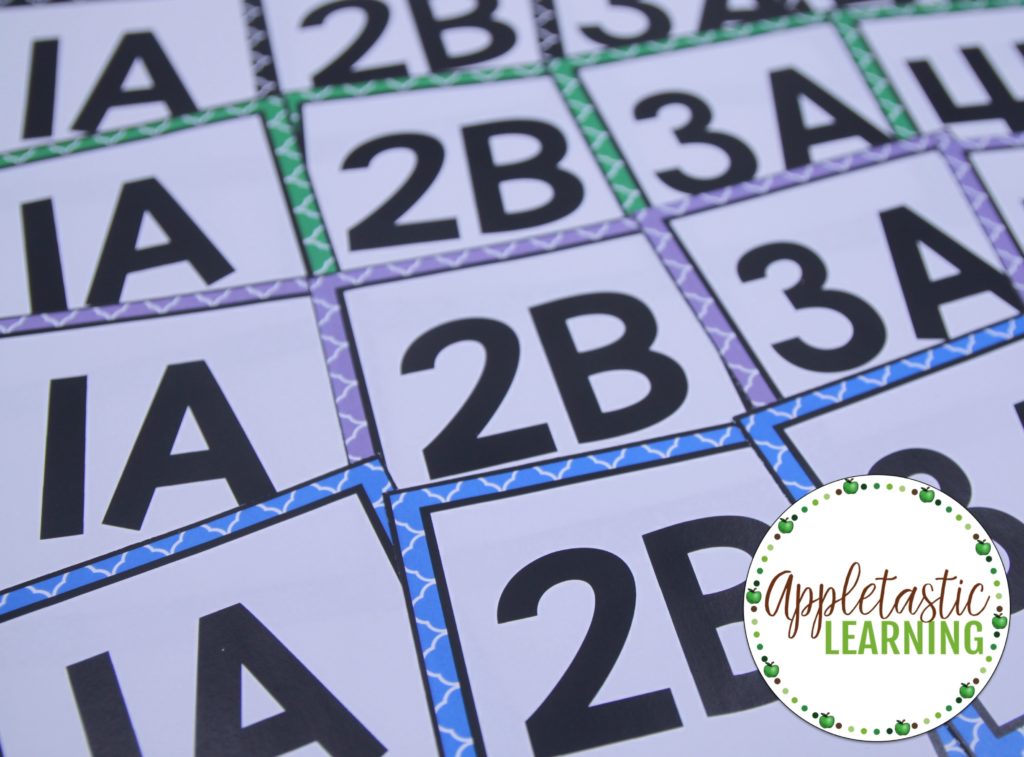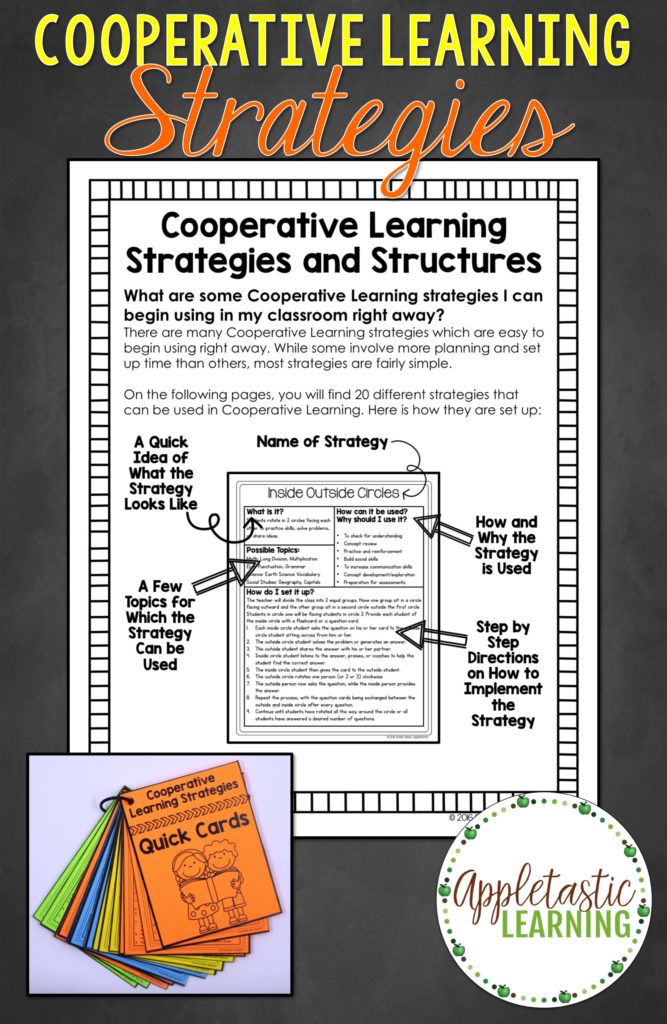

Cooperative learning is a teaching method in which small teams of students (usually mixed ability or levels) work together to meet learning goals. You might have heard about it, some of us use it on a regular basis, and others have not yet tried it in our classrooms. Here’s some basic strategies for implementing Cooperative Learning in your classroom.

Using the cooperative learning method in your classroom has many benefits for the students. Here’s just a few:
In my fifth grade classroom, I found much success using cooperative learning groups and strategies. Academic goals were met, a safe and happy learning environment was established, and students genuinely enjoyed the different strategies and structures. Because this worked so well in my own classroom, I decided to share with other teachers the tools and different structures I used and found helpful.
I recently added a complete Guide to a Cooperative Learning Classroom to my store at Teachers Pay Teachers. I wanted this resource to be a one-stop toolbox that included everything a teacher would need to successfully implement cooperative learning in his or her classroom. It’s not only ideal for newer teachers, but also is great for more experienced teachers looking for ways to breathe a bit of fresh air into their teaching!
The Cooperative Learning Toolbox includes ALL of these helpful resources:
In this video, I provide an overview about what Cooperative Learning is, why you need it in your classroom, how to arrange your groups, and how to best use the printable guide and other parts of the toolbox.

I am seriously so excited about this guide! It will be your guide as you begin to correctly implement and use Cooperative Learning in your classroom. It includes an informational overview on the topic, instructions on how to best create groups, how to arrange your space, and 20 Cooperative Learning strategies you can begin using right now!





I realize how busy teachers are and how much we are always on our feet, moving around the room. That’s why I created the Strategies Quick Cards. Each of the 20 strategies from the Guide Book are provided in mini form for you, so that you can easily access them on a ring. To make mine, I printed the Quick Cards pages on Astrobright cardstock paper, laminated, and cut apart. Then, I punched the top corner of each card and placed them on one ring. Voila! An easy-to-access strategy toolbox to help serve as a handy reference!


Part of cooperative learning is organizing students into small groups. I prefer to have my students in groups of 4. (I discuss how to handle odd numbers or larger groups of students in the video.) I’ve provided numbered desk tags for groups of up to 8 students. They are all color coded to keep things even more organized!

In cooperative learning groups, each student has a specific job to do, that’s part of the cooperative part. In my classroom, I change group roles each week. Each student’s number on their desk corresponds with a specific role for the week. So, all number 3 students in the classroom might be the reporter this week and the encourager next week. Attractive, coordinating posters outlining the responsibilities of each role are provided in half-page posters for use on a bulletin board.

To remind students of their exact duties within their groups, small role cards are also provided. I print these on cardstock, laminate, and tape to students’ desks.

For teachers whose districts want proof of participation, I’ve also included a P.D. certificate. If your district is looking for Professional Development presenters, please feel free to contact me. Also, I’ve placed a low price on extra licenses for this toolkit and P.D. video so that your staff may watch it together and use the toolbox in multiple classrooms.
ALL of these tools are included in ONE complete Cooperative Learning Toolbox!
Click HERE to buy the Toolbox today!

Here’s a few student tested, teacher approved cooperative group activities your students will love.

Hi, I’m Shelly! Thank you for being here. I love helping third, fourth, and fifth grade teachers with fun and engaging activities that require no to little prep! Let me help you by taking some of the stress and work off your plate.

©2022 Shelly Rees. All Rights Reserved.